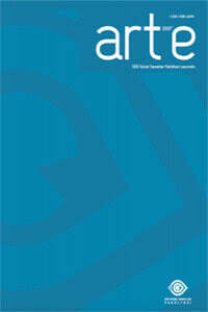Günümüz Sanatı ve Pastiş
Geçmişte olduğu gibi günümüzde de sanatçılar yeni arayışlar ve yorumlarıyla sanata yeni anlam/kavramlar kazandırmaktadırlar. Çoğunlukla postmodern olarak adlandırabileceğimiz günümüz sanatının jargonu sanat eserlerine karşı yorum kabiliyetimizi geliştirmekte ve anlaşılmasına olanak sağlamaktadır. Günümüz eserlerinin çoğulcu/bireşimci yaklaşımları, çok kültürlülük gibi özellikler ile karşımıza çıkmakta, sanat yapıtı ve üzerine yeni düşüncelerin yorumlanmasına yönelik gerekliliğe ihtiyaç duyulmaktadır. İçinde yaşadığımız çağın yeni kavramlarından biri olan pastiş sadece plastik sanatlar açısından değil, tüm sanat alanlarında karşımıza çıkabilecek derecede önemli gibi görünmektedir. Diğer birçok kavramda olduğu gibi günümüz sanatında da pastiş plastik sanatlar, sinema, mimari, edebiyat gibi disiplinlerde kendisine uygulama alanları bulmuş ve günümüz sanatının dinamik noktalarından birisi haline gelmiştir. Yapılan çalışmanın amacı günümüz sanatının belirgin dinamiklerinden biri olan pastiş kavram/üslubuna değinmek ve güncel sanat içerisinde bulunan örneklerini incelemektir. Bu itibarla konu güncel sanat ile sınırlandırılmış; güncel sanat örnekleriyle desteklenmeye çalışılmıştır. Nitel araştırma yöntemleri kullanılarak yerli, yabancı kaynaklar, görsel kütüphaneler ve bağlantılara ulaşılmış; örnek teşkil edebilecek özgün eserlerden yararlanılmıştır. Anahtar Kelimeler: Pastiş, sanat, çoğulculuk. Confusion About Style In Today’s Art And Pastiche Abstract As in the past, today, artists are contributing new meanings/concepts to art with their new explorations and interpretations. The jargon of today’s art, which can be generally called postmodern, is improving our ability to make comments on works of art and makes it possible to understand them. The pluralistic/syncretic approaches of today’s works of art include features such as multiculturalism and there is a requirement to interpret new ideas concerning works of art. Pastiche, which is one of the new concepts of our contemporary age, seems to be important in terms of not only plastic arts but also all kinds of art. As in many other concepts, pastiche has found areas of application in various disciplines such as plastic arts, cinema, architecture and literature and has become one of the dynamic components of today’s art. The purpose of this study is to touch on the concept/style of pastiche, which is one of the prominent dynamics of today’s art, and investigate its examples in current art. Therefore, the study was limited to the current art and an effort was made to support it through examples from current art. The qualitative research methods were used in the study and domestic and foreign resources, visual libraries and links were reached and original works that might serve as examples were utilized. Keywords: Pastiche, art, pluralism.
Anahtar Kelimeler:
Pastiche, art, pluralism.
As in the past, today, artists are contributing new meanings/concepts to art with their new explorations and interpretations. The jargon of today’s art, which can be generally called postmodern, is improving our ability to make comments on works of art and makes it possible to understand them. The pluralistic/syncretic approaches of today’s works of art include features such as multiculturalism and there is a requirement to interpret new ideas concerning works of art. Pastiche, which is one of the new concepts of our contemporary age, seems to be important in terms of not only plastic arts but also all kinds of art. As in many other concepts, pastiche has found areas of application in various disciplines such as plastic arts, cinema, architecture and literature and has become one of the dynamic components of today’s art. The purpose of this study is to touch on the concept/style of pastiche, which is one of the prominent dynamics of today’s art, and investigate its examples in current art. Therefore, the study was limited to the current art and an effort was made to support it through examples from current art. The qualitative research methods were used in the study and domestic and foreign resources, visual libraries and links were reached and original works that might serve as examples were utilized.
- Yayın Aralığı: Yılda 2 Sayı
- Başlangıç: 2008
- Yayıncı: Süleyman Demirel Üniversitesi Güzel Sanatlar Fakültesi
Sayıdaki Diğer Makaleler
Kavramsal Sanat Konulu Bir Sergiye Dönük Değerlendirmeler
GÜNÜMÜZ SANATINDA ÜSLUP KARMAŞASI VE PASTİŞ
Afyonkarahisar Geleneksel Tepme Keçe Üretimine Kadınların Ekonomik ve Sanatsal Katkıları
SANAT DÜNYASININ KÜLTÜREL ARACILARI:TÜRKİYE'DEKİ SANAT GALERİLERİNİN PROFİLİ
Feyza AĞLARGÖZ, Sevgi Ayşe ÖZTÜRK
DUYGU YANSITIMI PERSPEKTİFİNDEN ANİMASYON FİLMLERDEMÜZİK TASARIMI
Yalvaç İlçesi Ölümlük-Dirimlik Dokumaları
Hande KILIÇARSLAN, Sema ETİKAN
ESPRİ VE SÜRPRİZ KAVRAMLARI ÜZERİNDEN MODERN VE GÜNÜMÜZ SANAT ALGISINI ÇÖZÜMLEME DENEMESİ
